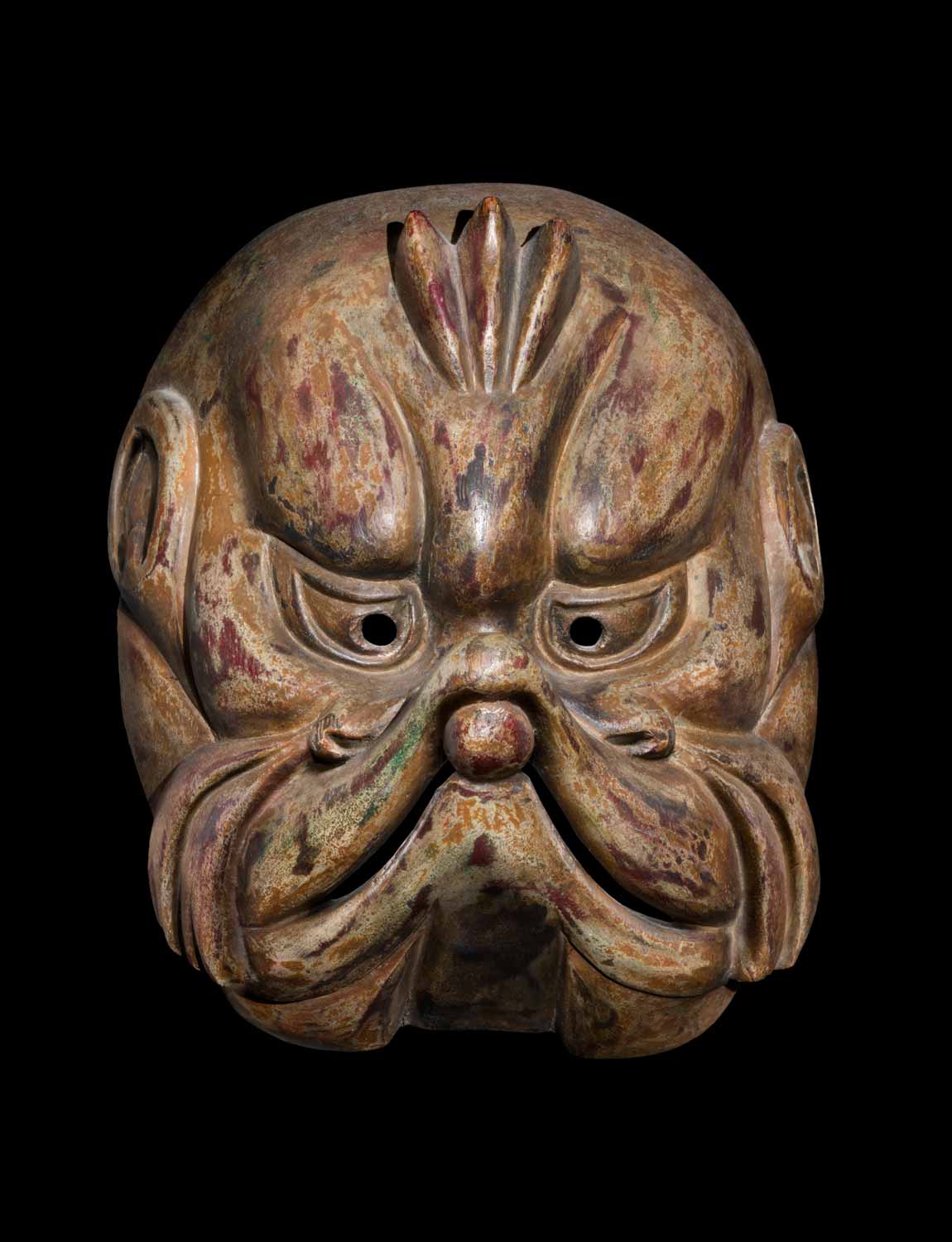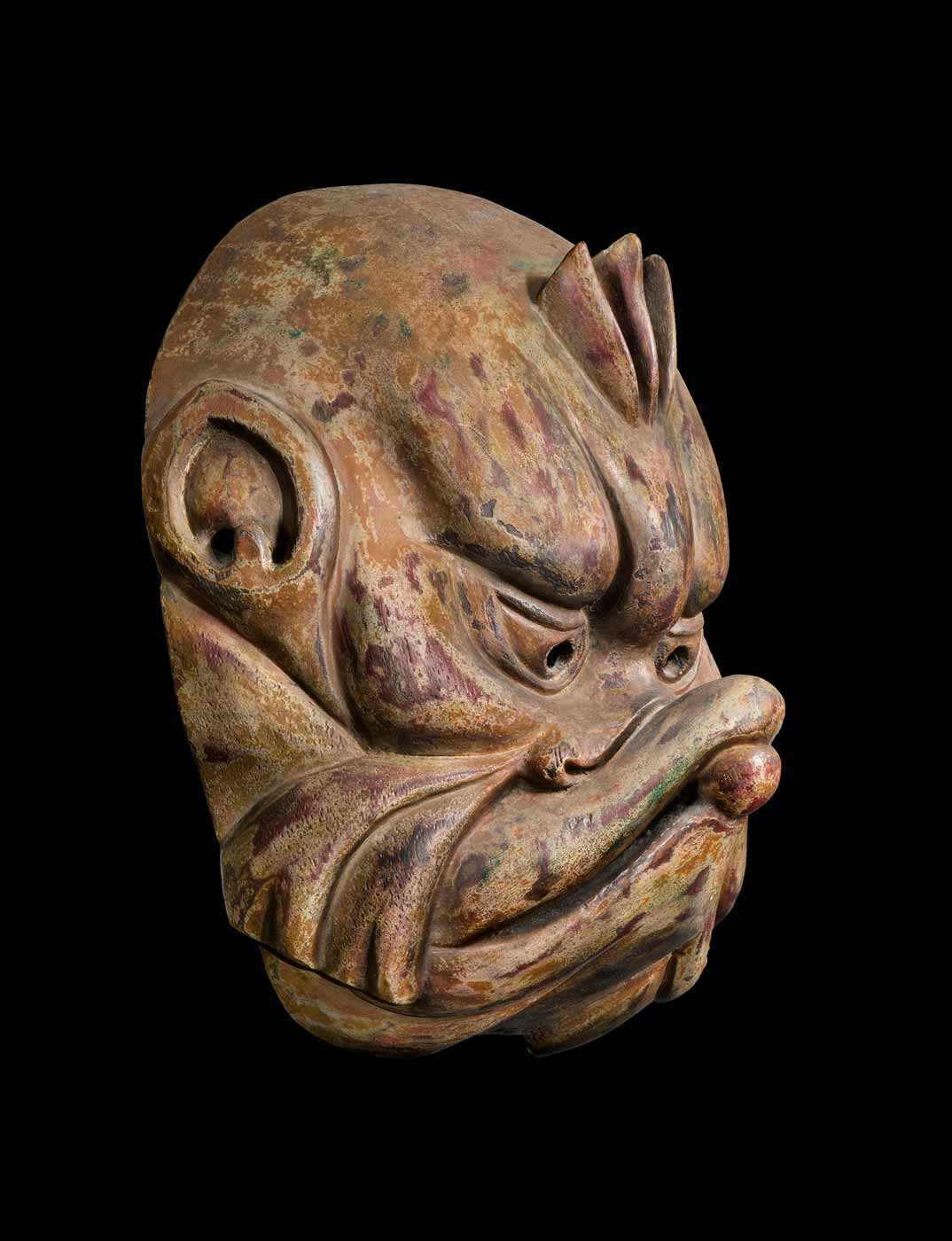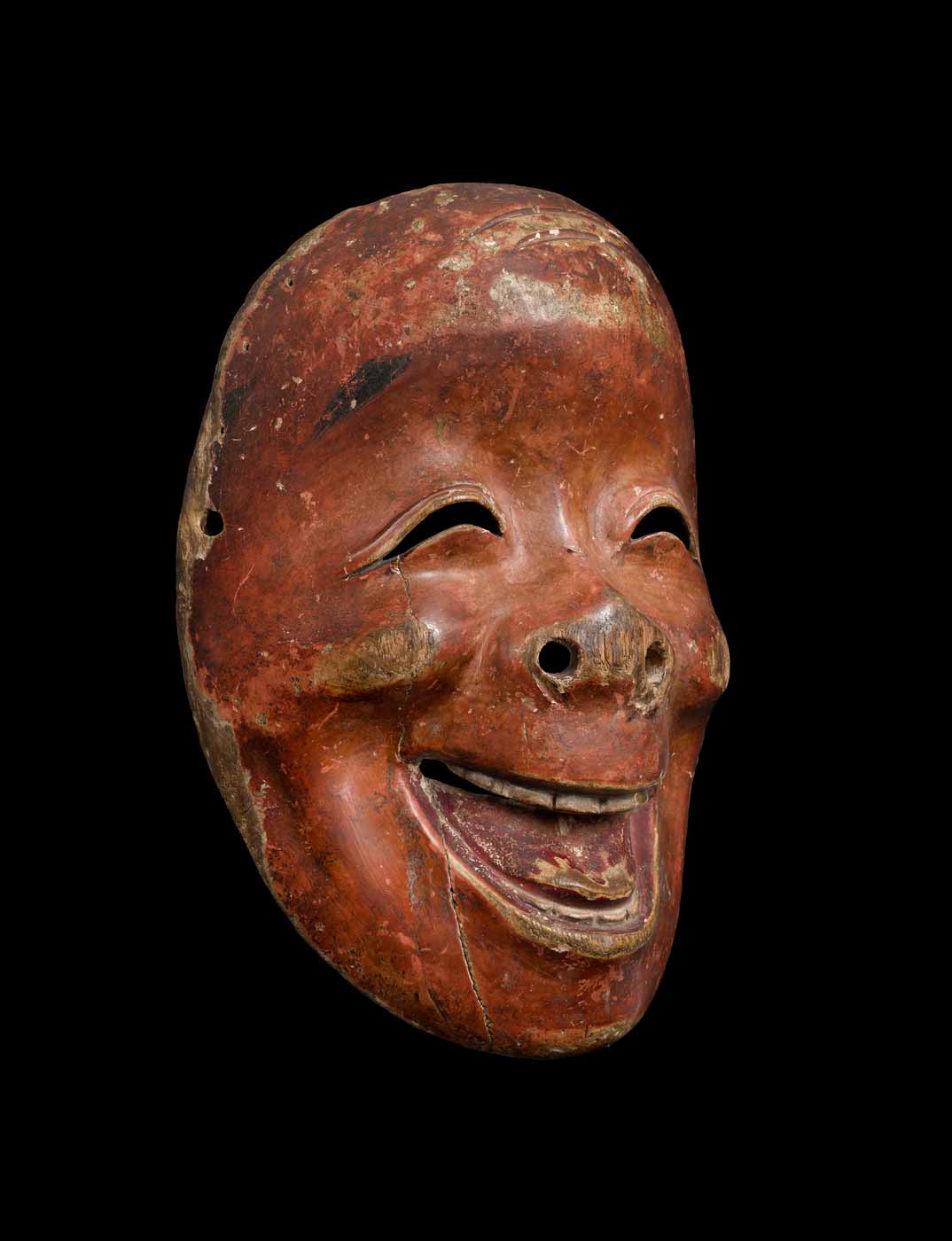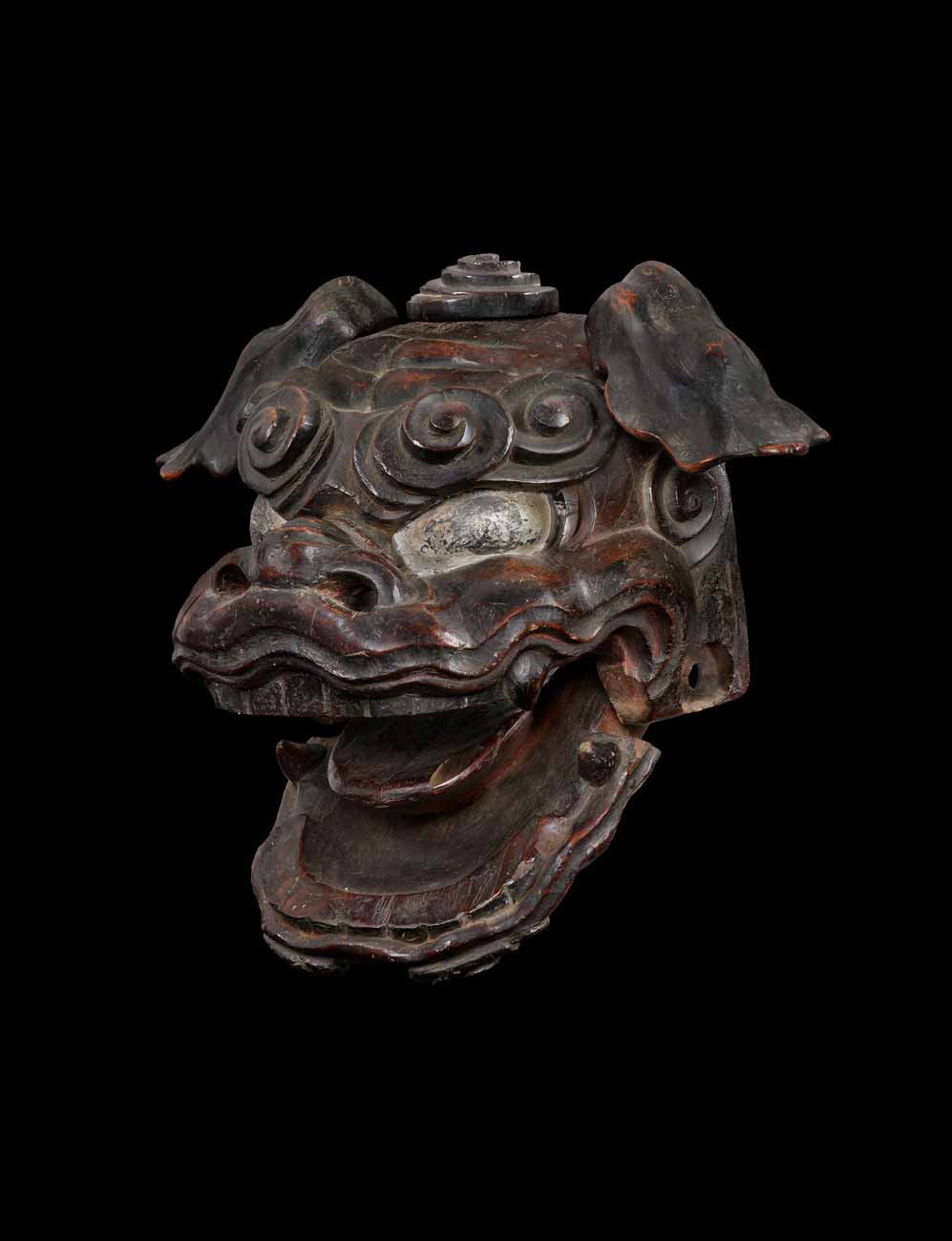Karasu-Tengu
Mask
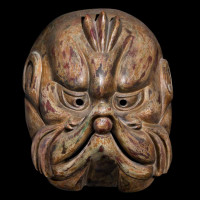
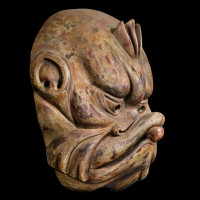
- Contact Us
-
Material
Wood and pigments
-
Period
Edo period, 19th century
Description
MASK OF KARASU-TENGU
The karasu-tengu (烏天狗) — karasu (烏) meaning “crow” and tengu (天狗) “celestial spirit” or “mountain demon” — represents the original form of the tengu, depicted with a beastlike face, a hooked beak, and a fierce expression.
A small rounded element carved at the tip of the beak is thought to represent either an air bubble or a sacred jewel (nyoi-hōju), a magical sphere associated with wisdom and vital energy. This detail emphasizes the powerful breath and spiritual force attributed to the tengu.
Such masks were used in dengaku and sangaku, popular performing arts inherited from the medieval period, as well as in ritual dances performed at temples and shrines, particularly within Shugendō and other mountain cult traditions.
Protector of mountains and ascetic monks (yamabushi), master of the sword and martial arts, the karasu-tengu also appears in legends as a mentor who initiates human heroes. Yet this formidable being could unleash chaos when provoked or disrespected.
In esoteric Buddhism and Shugendō, the karasu-tengu is revered as a spiritual guardian, sometimes regarded as a wrathful manifestation of Buddhist deities.
